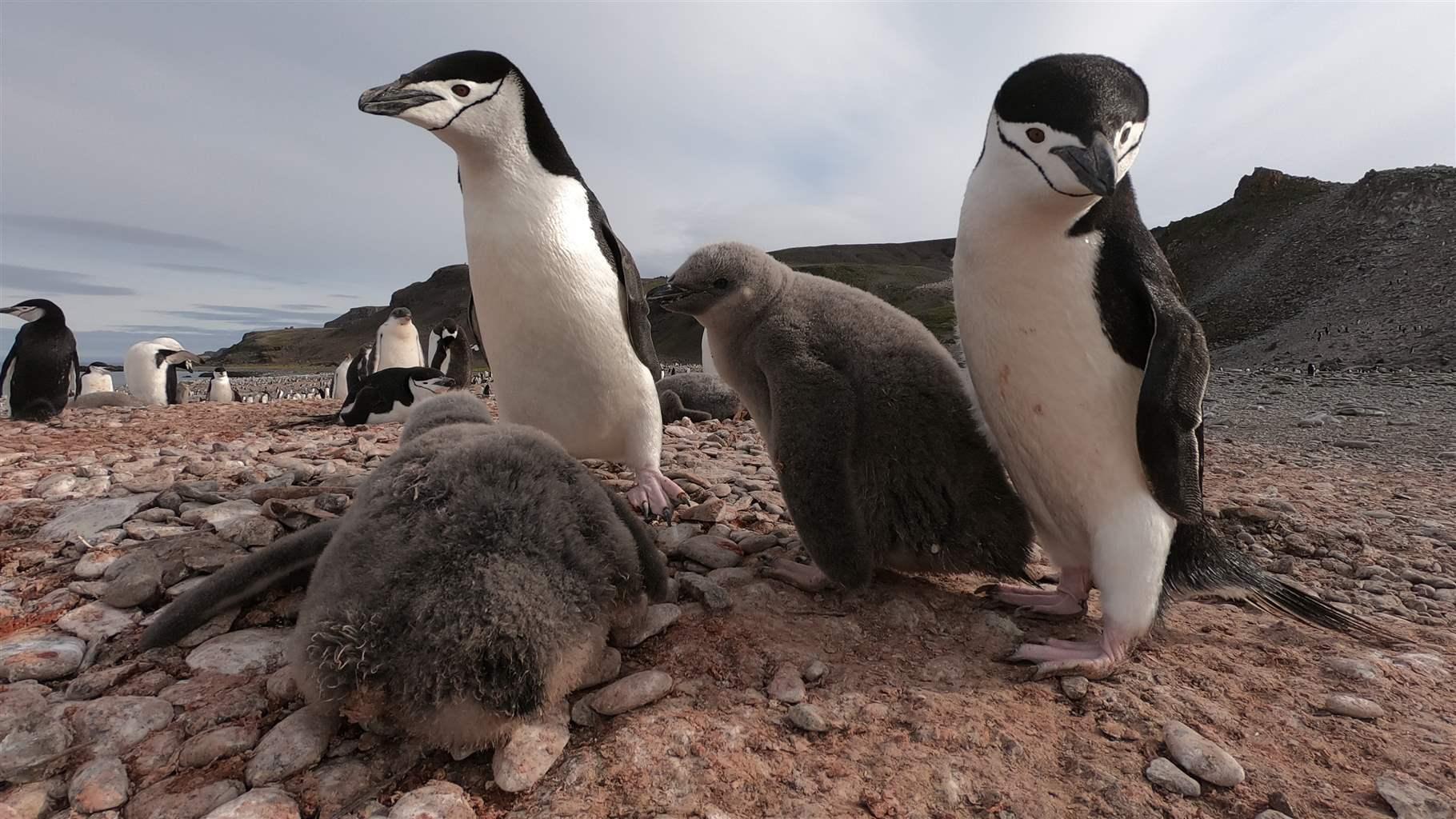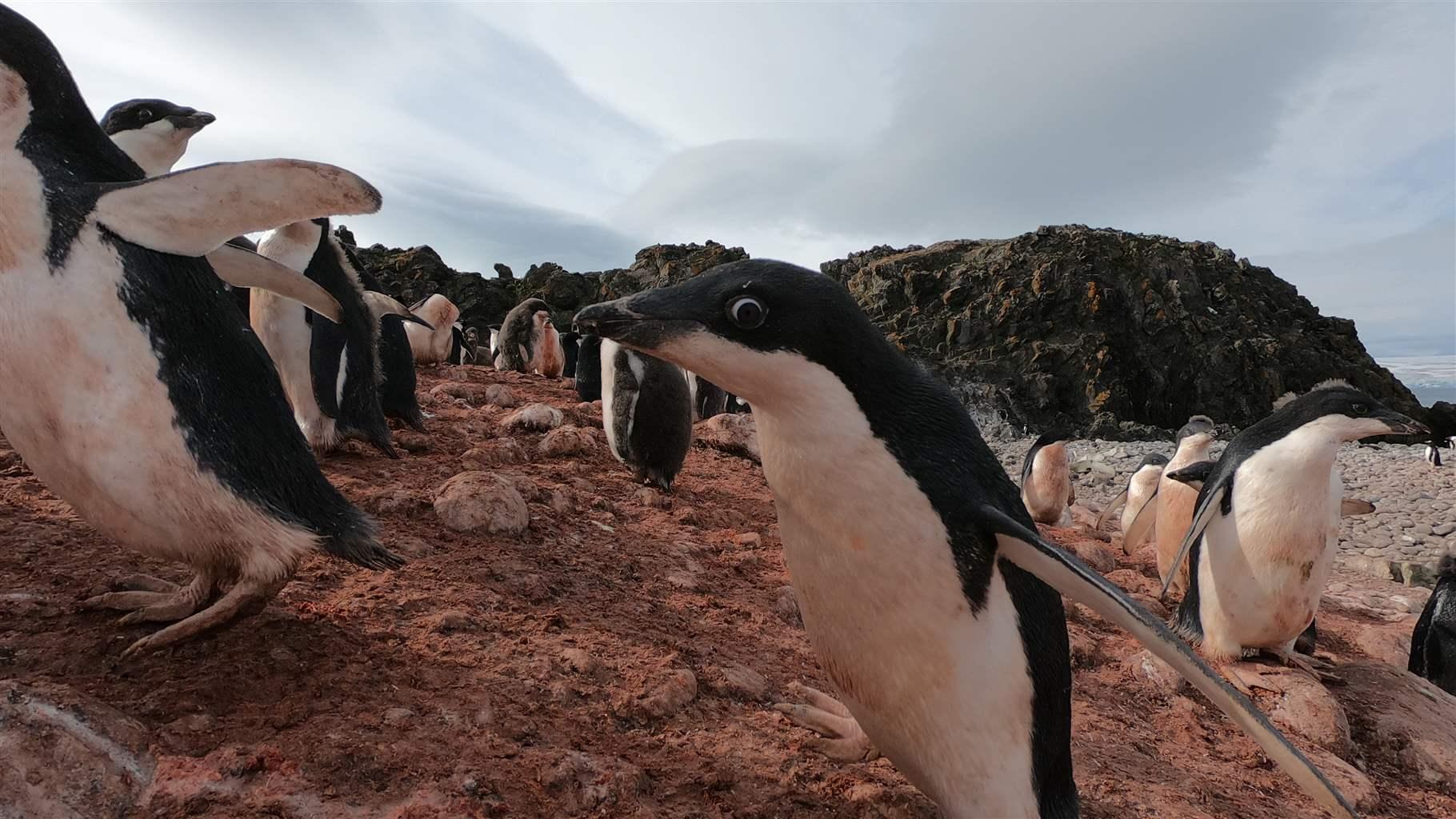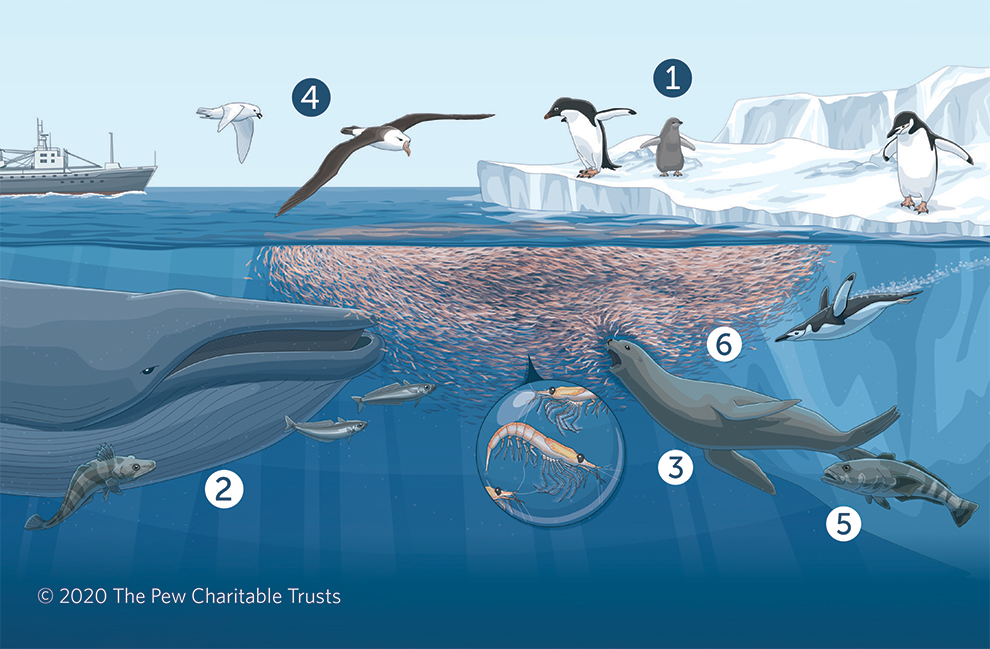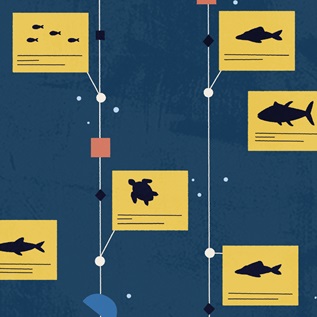Off Antarctic Peninsula Concentrated Industrial Fishing for Krill Is Affecting Penguins
Study shows need for expanded marine protections and new catch limits to reduce fishing intensity in small areas

Penguins in Antarctica—like wildlife worldwide—are part of complex ecosystems that must stay in balance for their inhabitants to thrive. As a new study shows, that balance is threatened in the Antarctic Peninsula, where concentrated fishing and climate change are making life much harder for penguins.
The study, published February 11 in the journal Scientific Reports, looked at the effects of fishing concentration in parts of the Southern Ocean and environmental conditions, related to climate change, on three species of penguins—Adélies, chinstraps, and gentoos—that serve as sentinels of broader ecosystem health in the Antarctic Peninsula region. Led by George Watters, PhD, director of the National Oceanic and Atmospheric Administration Southwest Fisheries Science Center’s Antarctic Ecosystem Research Division, the research underscores the need to better protect this remote but critical ecosystem.
Watters and his team analyzed over 30 years of data on penguin performance, a measure of 20 regularly monitored indicators of overall health and vitality, such as how long penguins spend swimming to find food, the size of parents when they lay eggs, and the number of chicks that live at least until they leave their parents.
At the two study sites in the South Shetland Islands, north of the Antarctic Peninsula, the researchers found the first direct evidence that krill fishing has harmed penguins at about the same level as has certain severe climate events.
The Antarctic Peninsula is one of the fastest warming places on earth. The region is also the center of the industrial fishery for Antarctic krill, a thumb-sized crustacean used in omega-3 oil supplements, aquaculture feed, and bait for fishing.
A Living Laboratory of Unique Biodiversity
Antarctic krill are a keystone species, serving as a major food source for more than 25 percent of the species in the diverse Antarctic food web, including penguins, seals, whales, and many fish species. The many remarkable species of the Southern Ocean make up some of the most intact marine ecosystems on the planet, where scientists are continually discovering new marine biodiversity, and can study nature in the absence of human interference. The following are some of the species that call the Southern Ocean home.
| 1. Penguins | Adélie, Chinstrap, Gentoo, Emperor, King, Southern rockhopper, and Macaroni |
| 2. Whales | Blue, Southern bottlenose, Humpback, Antarctic minke, Long-finned pilot, Sperm, Sei, Arnoux’s beaked, Fin, and Orca |
| 3. Seals | Antarctic fur, Crabeater, Southern elephant, Leopard, Ross, and Weddell |
| 4. Seabirds | Snow petrel, Wandering albatross, Antarctic petrel, and Antarctic fulmar |
| 5. Fish | Antarctic and Patagonian toothfish (Chilean sea bass), Icefish, Lanternfish, Antarctic eel cod, Grenadier, McCain’s skate, and Marbled rockcod |
| 6. Invertebrates | Krill, Antarctic sea spider, Crawling and glass sponges, Antarctic coral, Bone-eating worm, Yeti (hairy) crab, Octopus, Starfish, and Colossal squid |
|
Source: Claude De Broyer et al. (eds.), “Biogeographic Atlas of the Southern Ocean,” Scientific Committee on Antarctic Research (2014), http://share.biodiversity.aq/Atlas/example_BASO_web.pdf |
|
The study found that there is a 64-percent chance penguins have performed poorly over the past 30 years due to concentrated fishing which reduced local food availability in coastal areas where the flightless birds feed on krill. And the researchers project that there is a 77-percent chance penguins will perform poorly in the future if the climate continues to warm and fishing remains concentrated in the region.
Managing impacts
The Commission for the Conservation of Antarctic Marine Living Resources (CCAMLR), which has a mandate to protect the Southern Ocean’s diverse marine life, manages the Antarctic krill fishery. The 26 CCAMLR member governments set catch limits for the krill fishery at a regional scale and have long held that those limits ensure a sustainable fishery, and sufficient food for penguins and other predators.
The results of this study suggest that the current management approach is not as conservative as decision-makers thought: The study areas, while a very small portion of the management area off the tip of the Antarctic Peninsula known as “CCAMLR subarea 48.1”, received 58 percent of the total subarea 48.1 catch between 2010 and 2015.
“Our results suggest that the regional catch limits for the krill fishery are not as precautionary as decision makers presumed because we are seeing impacts on penguins in the smaller areas where fishing actually concentrates,” said Watters.
CCAMLR is currently preparing to update its ecosystem-based management system for the krill fishery, and the study shows the Commission should set more protective catch limits that account for where and when predators feed. This means prescribing at a very small scale where, when, and at what level krill can be caught to lessen local impacts on krill-dependent predators.
CCAMLR has committed to create a network of marine protected areas (MPAs) in the waters surrounding the Antarctic continent and, although the Commission has made some progress, it must do more to fulfill that promise.
At the annual CCAMLR meeting this October, delegates will consider a proposal by Argentina and Chile to create an MPA to protect a large section of the Antarctic Peninsula region. Complementary to setting catch limits that minimize localized fishing impacts on predators, designating the Antarctic Peninsula MPA would create a climate refuge for krill and penguins and could permanently protect the region’s unique marine ecosystem.
The new study is just the latest in a growing body of research that should guide CCAMLR’s actions. It’s now up to delegates to honor that science and do the right thing for Antarctica and the many species that need a healthy Southern Ocean to survive.









